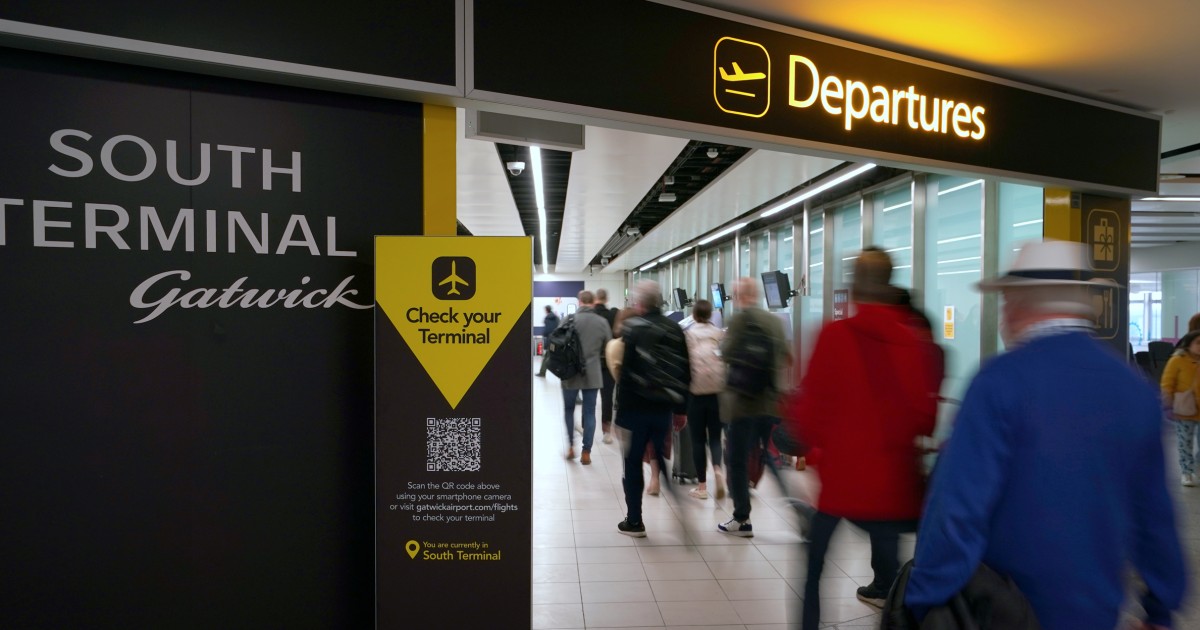Bussiness
How remote and hybrid models are transforming London’s business sector – London Business News | Londonlovesbusiness.com

Remote and hybrid work models are on the rise in the business sector of London, and as a result, the business landscape is changing rapidly. What used to be considered a ‘perk’ or an ‘extra’ has now expanded to being core to business processes, affecting everything from short-term tasks and activities to strategic planning. Just as holistic dentistry treatment options take a comprehensive approach to oral health, businesses must consider the full impact of these new work models to remain relevant in the ever-competitive business environment.
Overview of remote and hybrid work models
Working remotely and implementing the hybrid work model is an evolution from traditionally centralized working. Remote work refers to working environment where employees attend to their duties from other places other than the workplace, and mostly work from home while hybrid work comprises of blending between working from home and working from the organizational workplace. In the past, teleworking was not very common, but there were several companies and occupations that paid much attention to this practice. Though, the COVID-19 pandemic helped in advocating for its use as many tasks can be done efficiently from home and other non-conventional workplaces. Now, a more flexible model is evolving, and it is a hybrid model that combines the opportunities of remote work and in-office collaboration.
Impact on business operations
Working remotely and the concept of hybrid work have significantly changed business processes. Businesses have had to make adjustments to current processes and practices in order to accommodate these new forms of work. Business processes have become almost entirely dependent on technology and information systems, which enable communication between employees regardless of their location. Applications like video calls, project management tools, and cloud drives are now indispensable for keeping the work going and strengthening inter-/intra-communication. Furthermore, continued Flexible Working has made companies reconsider how they approach tasks and organizing meetings, as well as redesign existing processes to accommodate both remote and on-site work.
Employee productivity and work-life balance
Perhaps the most essential consequence of remote and hybrid work models is the effects on employee productivity and work-life balance. According to opinion of the majority of employees the opportunity to work from home has resulted in the improvement of satisfaction at work and better reconciliation of work and family life. The absence of necessary time for commuting and the opportunity to design a personalized office space can increase effectiveness and satisfaction. But this change also comes with some drawbacks. Employers have to find ways on how best to keep people engaged and delivering high performance – with setting measurable goals and objectives from the onset, constant communication, feedback and credibility. Adaptive management approaches must be reinforced with strong accountability measures to make asynchronous work models work.
Challenges and solutions
However, there are various challenges associated with remote and hybrid work models. Information sharing and team work may become a challenge when members are not located in the same building or in the same office. Discrepancies in communication may involve getting the wrong ideas, slow response time, and even the dreaded feeling of loneliness. In response to these issues, some of the strategies companies have opted to include the following; improved digital communication platforms, frequent meetings, and other exercises aimed at boosting remote connections. Cyber security is another important issue that organizations should consider especially given that many employees are now working from home. These risks can be minimized by adopting strong security controls and ensuring that people understand the proper ways of handling these assets.
Changes in office space and real estate
Technological advancements in remote and hybrid working are creating innovative disruptions to the commercial real estate market in London. As the number of employees permanently occupying an office decreases, it has become more common for businesses to reconsider the adequate office space. Some are reducing their conventional office space or adopting new forms of workspaces that can be used for specific purposes. It has implications for the real estate market as demand for offices might change and could lead to changes in property prices. Also, the layouts of offices are being changed; more focus is paid to providing the working areas for collaboration as the staff is in the office.
Legal and compliance considerations
Remote and hybrid work also present a set of legal and compliance risks. To manage talents successfully, employers are facing numerous challenges linked to health and safety, data protection, and employment law. The assessment and support of the home working environment falls under the compliance with health and safety regulations that involve remote workers. With remote working, it becomes increasingly difficult to protect the data as employees use multiple devices to connect to the company network, meaning there is a need to tighten security measures when handling the data. Therefore, awareness and compliance with these practices are crucial for organizations not to undergo legal risks and facilitate the shift to new work arrangements.
Employee recruitment and retention
Hiring and employee engagement management is a crucial area impacted by the new remote and hybrid work models. Today, flexibility is more important to workers than ever before and they now expect it to be included in the conditions offered by their employers.
Business organizations that provide the choice of extended elsewhere working or a blend of both forms can be able to secure the best workforce, especially during tight labor market conditions. Further, [it] can improve human resource management by maintaining flexibility and helping to reduce the turnover rates, hence increasing employee satisfaction. However, there are also issues that can be considered as threats to performance – to name but a few, maintaining a healthy organizational culture and making employees feel a part of the team even if they have to work from home.
Success stories
Many organizations in London has adopted remote and hybrid working policies and therefore, lessons can be learnt from them. For instance, tech companies and creative agencies have adopted remote work to be able to recruit from all over the world while the financial companies have adopted hybrid work to be able to maintain the need for some collaboration and physical presence. The above and these case studies show how business should change their strategies, embrace technological advancement, and provide a culture that supports employees working remotely or in a hybrid model.
Future trends and predictions
As we move into the future, work culture in London will evolve with flexible working regimes continuing to dominate remote and hybrid modularity. New trends involve the increased adoption of innovative solutions like artificial intelligence and virtual reality to support work from home. These developments will continuously evolve and challenge businesses, so business entities will also need to remain dynamic and updated. It will also entail continuous evolution of the balance between the working and personal life, the structure of the workplace and the foreseeable employees’ expectations
Impact on London’s business ecosystem
The use of remote and hybrid work structures is significantly altering the organization of London’s working environment. The shift also affects local economy differently, for example, when there are fewer office workers due to working remotely, fewer cafes, and public transportation services are patronized. On a larger scale, the changes are dictating the trend of how London presents itself as a global city for business, and how remote and hybrid working can potentially make it more attractive for multinational companies and talents.
Conclusion
In conclusion, the changes remote and hybrid work bring are far-reaching and impact a vast number of processes and aspects. While the business sector in London is in a constant state of transition, knowing more about these changes and their effect is vital to remain relevant and sustain growth in the new environment. If these organizations seize the opportunities and manage the risks of these new work models, the overall change can be managed effectively and enhance the business landscape of London as a robust and vibrant business hub.










